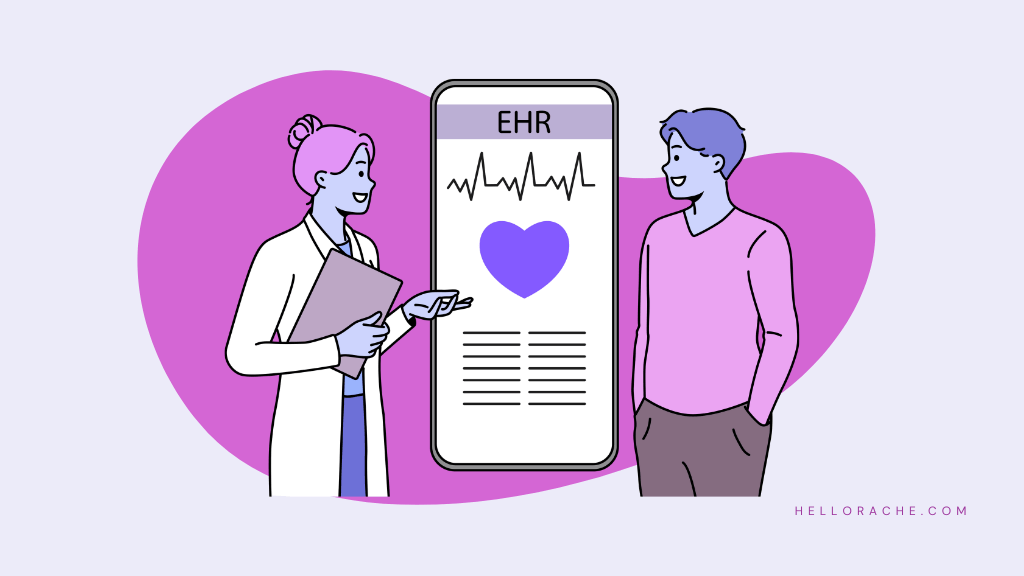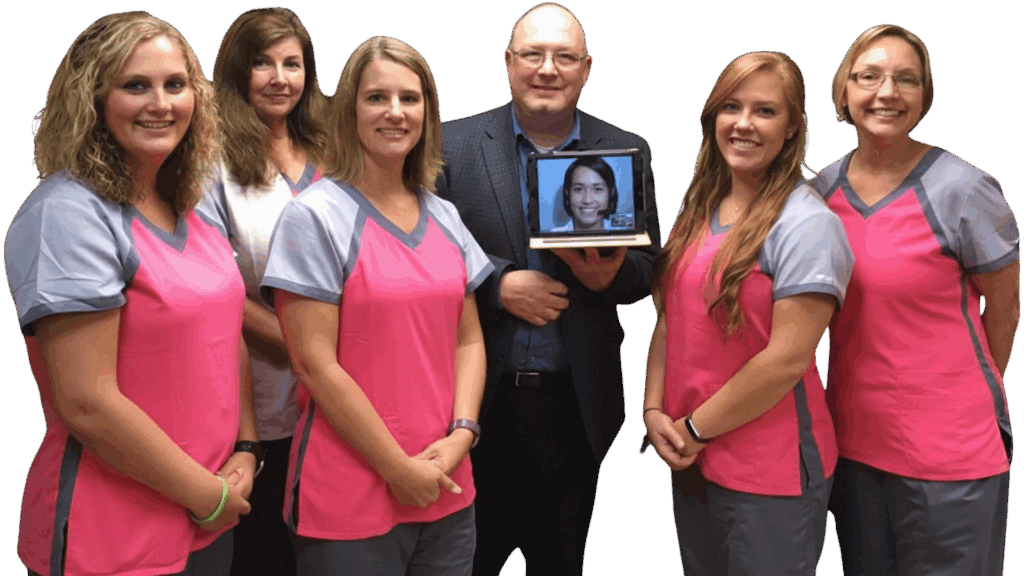Every year, around 136 million patients visit emergency departments in the US. There are 60,668 physicians currently working in emergency medicine, and they’re supported by a team of other healthcare professionals.
Emergency rooms (ERs) can be fast-paced environments, and ER teams are often required to work under pressure. Electronic health records need to be maintained, and patients need to be seen quickly and efficiently.
Emergency physicians often work with medical scribes. These documentation assistants are present during patient consultations and take care of transcription.
ER scribes need to be trained and up to date with medical terminology.
Want to know more? We’ve put together the following article that explains what an ER scribe is, what they do, and the top skills to look for in a person in this position.
What is an ER scribe?
An emergency room scribe sits with the physician while the latter converses with patients.
They work in an emergency room environment, and they can see a range of different medical conditions during each shift.
While the physician provides patient care, the medical scribe maintains records. The scribe works in real-time, updating medical histories, documenting triage notes, and keeping track of medication and treatment recommendations.
Medical scribes can also help with administrative duties. For example, they can assist with discharge paperwork, answering phones, and typing recorded transcriptions.
Emergency departments are often open 24 hours a day. This means that medical scribes can be required to work night shifts, weekends, and holidays.
The average ER scribe salary is $13.38 per hour or $30,427 per year.
Medical scribes don’t work only in emergency rooms, however. If you’re a healthcare professional who needs support, remote medical scribe options are available.
A virtual scribe might be the solution you’ve been looking for. Learn more about Hello Rache’s virtual scribes and Healthcare Virtual Assistants.
How to become an ER scribe
If someone wants to work as an ER scribe, they’ll need a high school diploma or equivalent.
An ER scribe’s work environment can be intense, and many of the patients they see are distressed. So, medical knowledge and healthcare experience are essential for those who want to work in this role.
Most medical scribes already have a career in healthcare. They may, for example, be a trained nurse practitioner, physician assistant, or paramedic. Some scribes are also medical students.
An ER scribe should be certified and have Health Insurance Portability and Accountability Act (HIPAA) training to ensure that they know how to store and manage sensitive patient data.

ER scribes can boost their skills even further by enrolling in scribe programs.
Competent scribes know how to work in a team. They have excellent communication skills and prioritize direct patient care.
Computer, phone, and time management skills are also important for an ER scribe.
What should you look for in an ER scribe?
Do you think an emergency department scribe would make a good addition to your team?
If you want to reap all the benefits a scribe provides, there are a few qualities you should look for.
Here are the top skills the right ER scribe should have:
1. Availability
Emergency departments operate day and night. A scribe’s availability is important in this busy work environment.
Day, night, and weekend shifts are common in this field. Scribes may even need to work on holidays.
Medical scribes may be asked to work overtime if a large number of patients are waiting for consultations.
ER scribes should also be reliable. They should finish their breaks on time and arrive at work organized and ready to start their shift. Doctors and patients shouldn’t be left waiting for an ER scribe to arrive.
Some scribes fill in at multiple hospitals. These workers need to be flexible and have reliable modes of transportation.
2. Medical knowledge
ER scribes need to be able to keep detailed records, as they are required to update patient files, check histories, and record triage information. They may also be responsible for documents related to discharge preparation.
Most patients who visit the ER are there due to an emergency. All medications, treatments, and referrals need to be transcribed accurately.
Because the ER can be such a fast-paced environment, your ER scribe should have medical knowledge. For example, a doctor working a triage shift may use medical jargon and acronyms. During the medical scribing process, these terms should be translated.
Your scribe can gain medical knowledge from previous healthcare experience, medical school, or a degree in nursing.
3. Communication skills
Next on the list of top ER scribe skills is communication. These team members work closely with physicians, nurses, and other healthcare workers. They’re also present during patient consultations.
The communication skills to look for in an ER scribe include written and verbal skills.
For example, a scribe should have good listening skills and be able to speak to their peers, hospital administrators, and patients with confidence.

They should also be able to transcribe in a way others can understand.
They may be required to write requests to nurses, referrals to specialists, or medication information. They may also need to create charts that will be seen by a range of healthcare professionals.
If patient data isn’t communicated correctly, it could result in a delay in treatment.
4. Computer skills
Hospitals use electronic medical records to keep track of patient information. Whether it’s accessing electronic files or typing triage documents, a large portion of an ER scribe’s role involves using a computer.
Look for an ER scribe who can type quickly and accurately. They should be able to keep up with and transcribe verbal conversations without error.
ER scribes should also know how to use different software, such as Microsoft Office and Google Workspace.
If they’re tech-savvy, they’ll be able to navigate new healthcare programs with ease.
Furthermore, ER scribes should be confident using other electronic equipment, including phones, fax machines, and printers.
5. Adaptability
Emergency departments and trauma bays see a diverse range of visitors. Some shifts can be particularly busy, with numerous patients seen per doctor.
While the physician provides precision care, they need medical scribe assistance. The scribe will be required to transcribe conversations and take notes under pressure.
Patients can have a range of conditions, and some health issues may be sensitive. They may suffer from stress, be bleeding, or have broken bones. ER scribes need to be calm and able to do their work regardless of the patient’s situation.
Emergency rooms can be intense workplaces, so adaptability is essential. If they have downtime, a medical scribe may be asked to help in other areas. For example, they may be tasked with answering phones, performing accurate billing checks, or recording insurance information.
6. Professionalism
Patients expect all healthcare workers to be professional. ER scribes are present during appointments, and their presentation and behavior reflects on the hospital.
Professional ER scribes wear neat and tidy attire. There is usually a dress code that they’ll be expected to meet, and this can vary depending on the hospital. For example, in some emergency settings, an ER scribe may be required to wear navy blue scrubs.
An ER scribe may also have to wear a mask and have their hair tied back. Close-toed shoes are usually a requirement for the job. A professional scribe will make sure their attire is clean and wrinkle-free.

Body language is also important. An ER scribe will be around patients, so they should be approachable. Maintaining eye contact and good posture can help put patients at ease.
Professional ER scribes know how to maintain patient confidentiality. They won’t discuss patients’ personal details with others, and they’ll follow HIPAA regulations when uploading data.
They will also treat their co-workers with respect and be empathetic to all patients, regardless of their background.
7. Attention to detail
ER scribes need to be detail-oriented. Any errors in documentation can be detrimental to a patient’s health.
For example, recording the wrong medication details, diagnosis, or referral could result in a patient’s condition worsening.
Look for a medical scribe who’s thorough and takes pride in their work. They should be confident and experienced, and they should double-check everything they do.
If an ER scribe picks up an error, they should ask the emergency physician for clarification.
How can a virtual scribe help in the ER?
If you work in an emergency room and need assistance, there’s another option. You don’t need to invest in a new employee to get support from a scribe.
A virtual scribe could be the solution you’ve been looking for. Virtual scribes are cost-effective, efficient, and available when you need them.
Plus, if you choose Hello Rache, you’ll get experienced, trained scribes with medical knowledge.
Let’s take a look at how a virtual scribe can help in the ER.
Updating patient records
A virtual medical scribe remains in the room with you. However, instead of being there in person, they do their job via video chat or phone. This means that they can still update patient records in real-time.
The physical presence of a scribe can be intimidating, especially during sensitive consultations. A digital assistant can make patients feel more comfortable.
Digital scribing during appointments is important if you want to maintain accurate records. These electronic medical files can be accessed by your healthcare team, and the information in them can be time-sensitive.
Your virtual medical scribe will know how to update electronic medical records to a high standard. They’re experienced in keeping data confidential and secure.
Typing reports
After the appointment, there may be more for the virtual medical scribe to do. They can do a wide range of clerical tasks, including writing reports and transcribing recordings.
When doctors are responsible for writing reports, this task can be time-consuming. In a busy emergency department, physicians need to see patients as quickly as possible.

A virtual medical scribe can create accurate documents and share them with the relevant people. That’s one less thing for the emergency physician to think about.
Even though virtual scribes work remotely, the quality of their work is the same as if they were in the room physically.
A virtual scribe has the same skills as an in-person scribe. For example, Hello Rache’s virtual scribes have strong computer skills, pay attention to detail, and have medical knowledge.
Reducing the workload
Any healthcare setting can involve an overwhelming amount of paperwork. A virtual scribe can support physicians and administrative staff by taking care of repetitive tasks.
When staff are away or on leave, those left at work can feel the burden of the extra workload. Plus, physician burnout – when a doctor ends up feeling overwhelmed, exhausted, and unmotivated – can occur.
A virtual scribe can give your whole team a better work-life balance. When your scribe updates files, writes reports, and takes care of other administrative duties, the rest of your staff can focus on other tasks.
Less time will be spent on paperwork between consultations, so patients can get in and out much quicker.
Maintaining patient care
Patients don’t plan to visit the emergency room. The ER can be a stressful environment, and patients and their families can get distressed if they have to wait for a long time.
Healthcare teams want to provide patients with a positive experience. Patient care can be improved when you streamline your processes.

A virtual scribe takes the time to get the details right. This means that they can flag any errors and make sure patients get consistently high-quality care.
With the help of an experienced scribe, an emergency physician can spend more time with the patient and less time on paperwork. Having this extra assistance can boost emergency doctors’ productivity.
Because a virtual scribe isn’t physically in the room, there’ll be more space in the room for nurses and other healthcare workers.
Virtual scribes are valuable members of emergency care teams, and patients can rest assured that no details will be missed.
The benefits of having an ER scribe
Medical scribes work in different fields. ER scribes work in emergency room settings and support physicians during patient consultations.
ER scribes update electronic medical files, write reports, and transcribe conversations.
Digital scribing can be a challenging task. However, with the right skills, an ER scribe can make a big difference in a hospital. The qualities to look for in an ER scribe include availability and strong communication and computer skills.
A good scribe will also be adaptable, professional, and detail-oriented.
You don’t need an in-person scribe to get support. A virtual scribe can do many of the same tasks, including updating patient records and typing up reports, from a remote location.
A virtual ER scribe can reduce the workload and the risk of doctor burnout, helping maintain high-quality patient care.





